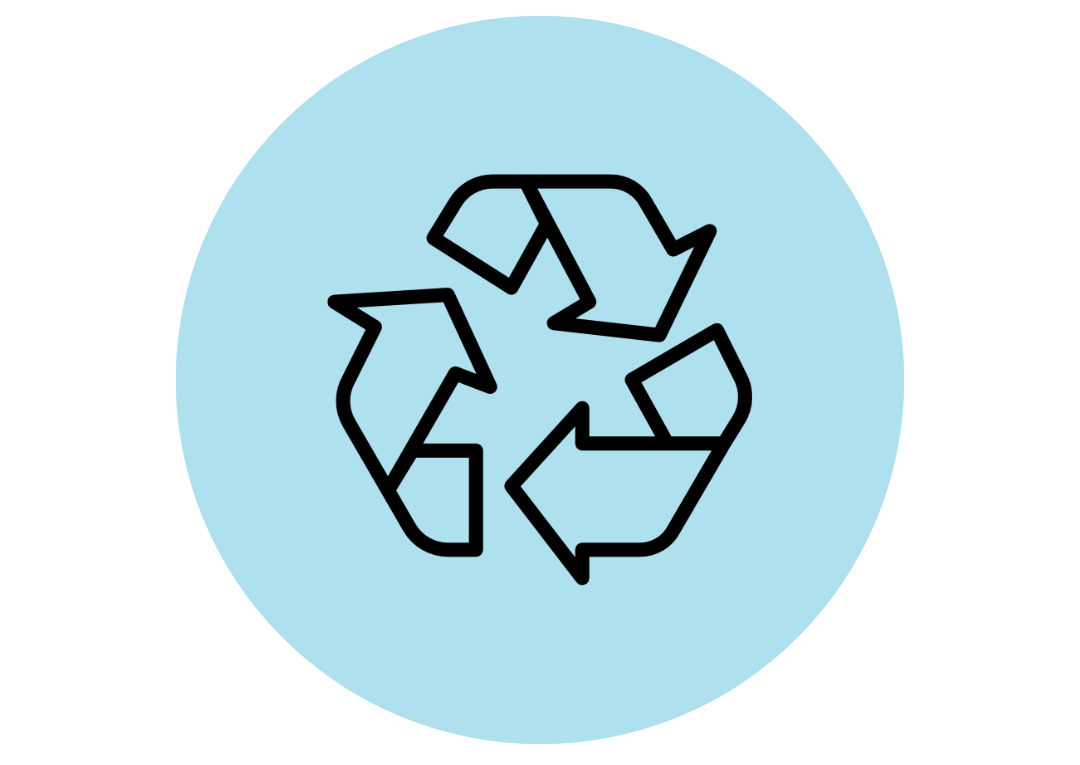Resources for a plastic free home
Having a healthy and safe home is a top priority for every family. However, struggling to break free from the convenience of plastic can feel overwhelming, or even impossible, to overcome. Fortunately, we are here to remind you that taking one action at a time, building that habit, and then committing to another action can make it feel more manageable and be more sustainable. So, make your way through this list and see what can work with your lifestyle and budget. Then, remember to come back and invest in another - because managing the plastic coming into your home helps to protect your health, shield our environment, and save our Earth.
Remember, progress over perfection.
The Kitchen:
When you’re trying to go plastic-free in the kitchen, the simplest way to get started is to first observe what you throw in the bin over the span of a week to notice any patterns or problem areas! Becoming aware of how you’re using plastic in your kitchen can help you decide which plastic-free switches to make - check out this video to learn how to conduct a home waste audit. Reminder: If you have reusable plastic in your kitchen, you do not need to throw it away. A plastic-free kitchen means not buying new plastic. A great place to begin could be replacing plastic wrap or storing food in glass containers! However if you’re looking for other suggestions, check out these 18 other ways to reduce plastic waste in your kitchen!
The Bathroom:
Another great space to reduce the plastic waste in your home is the bathroom. It is easy to overlook just how many beauty, personal, and hygiene products come packaged in plastic! Luckily, there are many alternatives on the market to make the transition easier - such as shampoo/conditioner bars, organic soap, reusable cotton pads, metal razors, toothpaste tabs, and so much more. Explore other plastic-free bathroom switches here!
Cleaning Supplies:
Cleaning your home can feel daunting, but finding plastic-free alternative cleaning supplies doesn’t have to be! There are many natural, plastic-free cleaning brands on the market that you can choose from, however using the classic vinegar and water with a reusable rag can also do the trick for just about any surface! You also can make homemade toilet bombs, dusting spray, air freshener, and more to avoid the annoying plastic packaging. Tip: to counteract the vinegar smell, simply use soapy water to rinse off your newly disinfected surfaces.
Laundry Room:
Ditch the laundry jugs and do your laundry plastic-free. Luckily, there are less wasteful, greener options on the market that are slowly becoming easier to find, as long as you look beyond the laundry aisle of the supermarket. Check the alternative products section, visit your local health food store, order online, or mix up your own detergent. Even changing your fabric softener sheets for a wool ball and some essential oils can be the quickest plastic-free switch to make, as conventional fabric sheets are made from plastic! Lastly, investing in a microfiber filter or a Cora Ball microfiber catcher can be a solution that will make a huge difference and will last a long time.
The closet & linens:
Begin to fill your closet with more natural fibers or thrifted clothing! The most common fibers used today, such as polyester and nylon, are synthetic fibers, meaning they are actually plastic! Burning fossil fuels to create synthetic materials is a major contributor to the total greenhouse gas emissions, and has greatly contributed to the plastic problem of today. Here’s what you can do: buy more natural fibers, like wool, cotton, or silk, to help cut back on the plastic hiding in your closet. Reject the concept of fast fashion - shop only when you really need something and choose durably made clothing that can be repaired for generations. Lastly, thrifting can give synthetic clothing a second life, overall helping to decrease the demand for virgin petroleum products. This also applies to all fibers in your household - towels, bedsheets, pillows, tablecloths, napkins, rugs, shoes, bags, and more!
Properly recycle:
Properly recycling in Milwaukee can be another great way to manage the plastic waste that enters your home. Despite how hard you might avoid single-use plastics, sometimes they can be unexpected or unavoidable - so, it’s best to learn how to properly dispose of them. Here is a great recycling guide that can help you understand the City of Milwaukee’s recycling rules! Milwaukee only accepts washed #1, #2, and #5 plastics, so if you are looking to recycle your plastic film use this drop-off directory to find the nearest location to you. Here is another helpful recycling directory to help you sort out the rest of your trash.
BONUS: Compost your food & Lawn waste:
Composting can be an important commitment when living a sustainable lifestyle. By composting our organic waste and diverting it from the landfill, we’re supporting the environment by reducing greenhouse gas emissions and increasing soil quality. Here is a guide that helps you learn about all of the ways you can compost your food waste at home! And since the Wisconsin Recycling Law prohibits sending yard waste to landfills, you can watch these two videos on grasscycling and mulching leaves to better understand how to handle and manage your yard waste!








